|

View
map of Kenya
 View
map of Africa View
map of Africa
Copyright © All World
Vacation Station
|
 |
 
KENYA,
AFRICA TRAVEL GUIDE:
|
|

 Beach
holidays, mountain trekking and safari adventures in Kenya Beach
holidays, mountain trekking and safari adventures in Kenya
For
those planning an African experience, Kenya is an excellent choice. This
East African country offers a variety of landscapes from its tropical Indian
Ocean beaches to its inland savannah, mountain highlands and the Great
Rift Valley and everything in between... read
more
The Republic of Kenya
is a country in Eastern Africa. It is bordered by Ethiopia to the north,
Somalia to the northeast, Tanzania to the south, Uganda to the west, and
Sudan to the northwest, with the Indian Ocean running along the southeast
border.
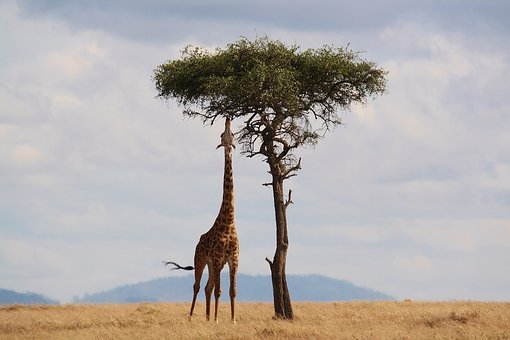
Kenya has considerable land
area of wildlife habitat, including maasai mara, where blue wildebeest
and other bovids participate in a large scale annual migration. Up to 250,000
blue wildebeest perish each year in the long and arduous movement to find
forage in the dry season. The "Big Five" animals of Africa can also be
found in Kenya: the lion, leopard, buffalo, rhino and elephant. A significant
population of other wild animals, reptiles and birds can be found in the
national parks and game reserves in the country. The environment of Kenya
is threatened by high population growth and its side-effects. |
| Travel Reading on Kenya:
Kenya
Beach Vacation - fun things to do on the eastern Africa coast
Kenya
Mt Climb Guide, Information and Facts - Climbing Kenya Mountain
Mombasa
Travel Guide
Mt
Kenya Climbing - Kenya trekking, Kenya Mount Organized Treks
Preparing
Yourself for a Wildlife Photography in Kenya |
Preparing
Yourself for a Wildlife Photography in Kenya by Lucy Maruhi
When I first thought about doing
wildlife
photography in Kenya I was a bit stuck for inspiration. I was in the
middle of the city with no wildlife in sight, unless you counted the people
milling all around me, and I wasn't due up for another long vacation in
Kenya for at least a few months yet. So obviously wildlife photography
in Kenya, in the wild was out, but someone very helpfully pointed me in
the direction that I'm about to point you in now. There is more or less
all the wildlife varieties that I could want in Kenya, you just need to
be where the action is.
Its the thought of capturing
on film the big cats like the lions, the cheatah and the Leopards or maybe
the elephants that brings me to Kenya. What about hippos, or zebras or
even rhinos? You could even go for the birds at the Kakamega Game Reserve
Deep in the indegenous rain forest with beautiful bird species that you
could only marvel at.
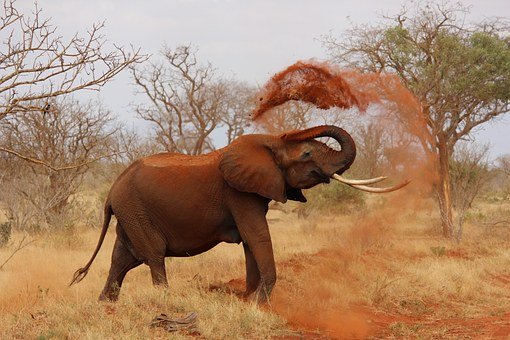
And if you don't like the
idea of going big, then do you like the idea of going small? Have you thought
about monkeys, squirrels, butterflies and insects? What about the much
maligned rodent varieties? As you can see there are many different types
of wildlife photography in Kenya options available to you and you just
have to reach out and take it.
In the wild, is where you
get all the action, all the heart pounding terror of being in the wild
along with the animals, knowing that you're in their home court and that
your advantage depends entirely on the guide who's leading you around.
This then is what many of the greatest photographers interested in wildlife
photography in Kenya yearn to do and where they end up anyway. Whether
the reality meets their expectation of the dream is another matter entirely.
They're there, in the wild,
with the ability to get up close and personal with their wildlife subjects.
Nothing at all like the zoo back home, but then again what did you expect
right? However, it's also true that wildlife photography in Kenya shots,
are natural, and don't have to be shots of the big game animals. wildlife
photography in Kenya shots can be of anything that is considered wild.
Take the wildebeest crossing the Mara river for instance. I consider the
shots that I took of this phenomenon to be God sent. The sight of the Lions
bouncing and bounding around like nobody's business and defending their
territory with deep menacing growls is a sight to capture when doing wildlife
photography in Kenya. The fact that they wouldn't hurt human beings is
another matter entirely.
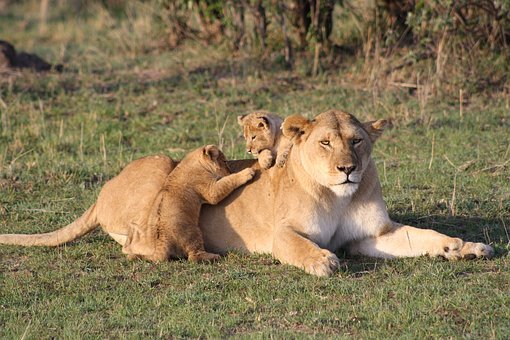
So although in-the-wild wildlife
photography in Kenya is great and looks amazing, its not an easy job for
the amateur photographer, at least in the beginning. The Kenya wild is
preferably where you might like to take your wildlife photographs, but
sometimes you just don't have the choice or the ability to do that. In
that case I would recommend that you start your sojourn into wildlife photography
at your local zoo. I am not Kidding! Going to the Masai Mara, Samburu,
or the Tsavo National Parks will offer you the opportunity to catch some
of the fiercest wildlife, in their habitats, then at their best and their
worst. It's a bit like catching a movie star in their baggy sweat pants
with absolutely no makeup on them! It's fascinating and you will absolutely
get the chance for candid shots if you were in their natural habitat.
Top
|
|
Read
more Kenya articles
|

The
allure of Mombasa - Kenya's all-round tourist resort
Mombasa is a major sea gateway
for the whole of eastern Africa. It is Kenya's oldest town and the
second largest metropolis, after the capital city, Nairobi. It is
also the air gateway for those coming to enjoy the beaches along the Kenyan
Coast. From Mombasa, you can enjoy Kenya's magical wildlife safaris.
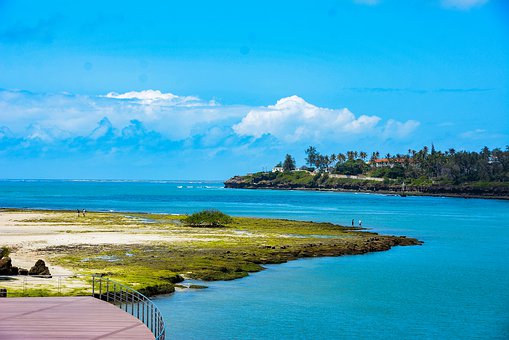
Mombasa has a long history
dating back to 200 AD. There is an old harbor that is still visited by
trading dhows bringing frankincense, Myrrh and marvelous Persian and Bokhara
carpets for the Mombasa bazaars. A walk around the old town is a fascinating
maze of narrow streets, overhanging balconies and mysterious doorways leading
to dark interiors. History and culture of Mombasa A melting pot of
diverse culture, once conquered by the Portuguese, Mombasa has seen many
rulers and conquerors - the Arabs used Mombasa for the slave trade and
the British used the town as a naval and trading post.
Fort Jesus, overlooking the
entrance of the old port of Mombasa, was built by the Portuguese in 1593
to protect their trade route to India. An Italian architect, Jao Batisto
Cairato, designed it; it was the 'crown jewel' of his career. Fort
Jesus is today hailed as one of the best examples of 16th century military
architecture. In 1962, the Fort opened its doors to the public as a museum
and has since remained a popular attraction for foreign and local tourists,
researchers and students.

Alongside Lamu town, Mombasa
is the epitome of Swahili. Many buildings in residential areas, and part
of the old town are still built in the original Swahili architectural form,
with a blend of modern plans. Swahili houses are large and spacious, with
intricate carvings in wood and plaster and lavish doorframes.
Beach Activities in Mombasa
Besides swimming and simple
sunbathing, you can undertake a wide variety of water sports and water
activities while on vacation in Mombasa. These include scuba diving, snorkeling,
dhow trips, deep-sea fishing and many others. The waters below teem
with abundant marine life. In Mombasa, the sun shines all year round. The
diversity of activity is simply unequaled.
Night life in Mombasa
Nightlife in Mombasa is limited
mainly to eating out while many of the nearby beach hotels feature discos,
casinos and nightclubs. North and south of Mombasa Island are
the most developed beach resorts with a wide choice of hotels that have
nightlife activities.

National parks for wildlife
viewing from Mombasa
Because of Mombasa's proximity
to wildlife national parks and game reserves, visitors to Mombasa are able
to enjoy safaris to so of Kenya's wildlife areas. Day excursions
to the parks and even short overnight safaris can be easily arranged from
Mombasa.
Towards the south of Mombasa,
there is The Shimba Hills national reserve and the adjoining Mwalugange
Elephant sanctuary represent an environment of extraordinary diversity.
Both are no more than 250 square kilometers and 36 square km respectively
and yet together they form one East Africa's most diverse plant and animal
havens. It takes less than 1 hour to drive from any of the hotels
in the north coast of Mombasa to Shimba Hills Lodge.
Apart from Shimba hills,
and to the interior of the country, you find the Tsavo National park. This
park is split into two sectors of East and West covering a total area of
over 20,000 sq km. Tsavo was once famous for herds of over 60,000 elephants.
Although these herds have since been depleted through drought and poaching,
it is still possible to see large herds on the east side.
Over the west are the Mzima
springs where Hippo and Crocodile can be seen from an underwater hide.
Taita Hills Wildlife Sanctuary is a small, private game sanctuary
adjoining Tsavo and has a high concentration of wild animals. Driving from
Mombasa to Tsavo East gate will take 2 hours at most.
Further inland from Mombasa,
you find a little gem of a park - Amboseli - situated right at the foot
of Mt Kilimanjaro, Africa's highest mountain. Elephants abound in the lower
forest and swamp areas. Cheetahs are found on the salt flats, Giraffe wander
through the Doum palms while herds of Zebra and Wildebeest feed on the
open plains. The snow-capped dome of the mountain provides the perfect
backdrop to the peaceful grazing game, making this park a photographer's
paradise.
Top
|
 |
Kenya
Beach Vacation - fun things to do on the eastern Africa coast
The beaches of Kenya are some
of the world's most alluring playgrounds. Besides the beauty and tranquility,
they offer plenty of opportunities for water sports and other beach vacation
activities. Or simply sun-bathing. One is not surprised then, that more
than 50% of Kenya's international standard hotels are based along the coast.
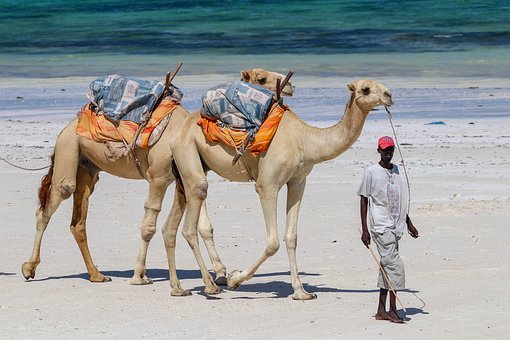
Some of the fun things to
do while on your beach vacation on the Kenya coast are:
Dolphin-Watching
Since dolphins are frequent
visitors off the Kenyan coastline, dolphin-spotting dhow trips are organized
to the Kisite Marine Park. This is a full day trip with traditional lunch
served either onboard or on Wasini Island. Snorkeling equipment is provided
so that you can build up an appetite while exploring the coral gardens.
Dhow Trips
A dhow is a traditional sailing
ship with over 1000 years history of plying the waters of the East Africa
Coast. Built entirely from wood, they were traditionally used to transport
spices, carpets, and other goods between Africa and India. Sightseeing,
lunch or dinner is available with on-board entertainment in form of fire-eaters,
limbo dancers, acrobats and more.
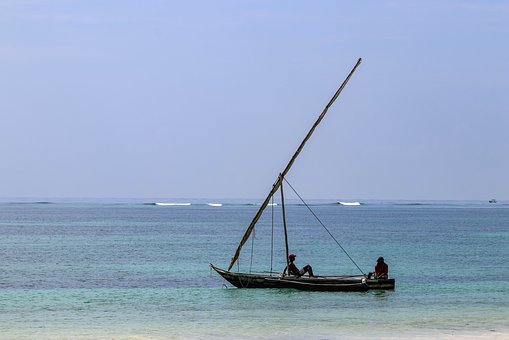
Dhows usually have wooden
eyes carved into the front sides. It was believed that these eyes would
protect the dhow from being marooned on reefs, and from the evil eye that
could be placed by the enemies. Today, the tradition lives on, even though
the superstitions have died out.
Visit to the Marine Parks
The beach towns of Mombasa,
Malindi and Watamu all have marine parks and reserves are simply amazing
in terms of diversity and beauty of the marine life they host. They pars
and reserves are also very accessible. The Kiunga Marine National reserve
provides a refuge for rare sea turtles and dugongs - mermaids. Trips from
the hotels can be arranged to the animals and appreciate the conservation
efforts being undertaken to save them from extinction.
Deep-sea fishing
Some of the best fishing off
the African continent is found off the Kenyan coast, where many all-Africa
records have been set. Kenyan waters are home to millions of billfish and
contain the top sporting game-fish. Malindi is probably the best place
in Africa for sailfish, while the Pemba channel is known for striped marlin,
large yellow-fin tuna and sharks. All along the coast from Lamu in the
north to Shimoni in the south, boats and equipment are available for hire.
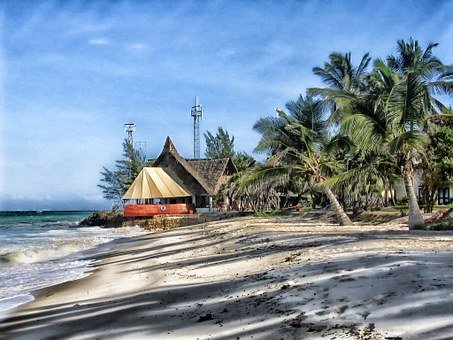
Scuba Safari
The Kenyan coral reef is home
to some of the world's most diverse marine life. Swim along the coral gardens
and visit the marine life underwater. For wreck divers, MV Diana lies in
around 35 meters of water just off Bamburi Beach in the north coast beach
of Mombasa.
Various activities are also
available along the entire coast, including windsurfing, water skiing,
snorkeling and scuba diving. Surfing can be found off Lamu at Sheila beach,
but beware of sharks, as there is no coral reef.
Most hotels will have an
information desk where you can access information on how to book and get
your waters ports and activities organized.
Top
Solomon Okila is the Editor
and Senior Safari Consultant at African Voyages Tours and Travel.
This is a tour operator and Safari Outfitter that specializes on African
Travel and holidays. The website has guided thousands of travelers to achieve
their dream holiday. |
Angola
- Botswana - Burkina
Faso - Cameroon - Congo
- Eritrea - Ethiopia
- Gabon - Gambia -
Ghana
- Ivory Coast - Kenya
- Lesotho - Madagascar
- Malawi - Mauritius
- Mozambique -
Namibia
- Nigeria - Senegal
-
Seychelles - South
Africa - Swaziland - Tanzania
-
Tunisia
- Uganda - Zambia
- Zanzibar - Zimbabwe
|

